|
If you work for a small nonprofit like I do, you probably know that it's hard to find time to work on planned giving. Planned gifts don't usually help you reach that all-important year-end fundraising goal, and there's a lot of technical terminology that, as a new fundraiser, you may not feel confident in discussing with donors. In this article, I will give you lots of reasons why you should be promoting planned gifts, a feasible plan to get started, and help demystify some of the basic terminology. National Estate Planning Awareness Week (NEPAW), held annually during the third week of October, is a prime opportunity for nonprofits to highlight the importance of estate planning and the opportunities of estate gifts. The goal of NEPAW is to increase public awareness of the need for proper estate planning, which can benefit individuals and their chosen charitable organizations significantly. My hope is this article will spur you to prepare now to fully leverage National Estate Planning Awareness Week so planned giving leads come to you! The Relationship between annual giving and planned givingDonors make annual gifts from income. Donors make planned gifts from assets. The connection comes because planned gifts usually come from your most loyal supporters not necessarily the wealthiest. This is why you should never undervalue annual gifts and you should have a consecutive year giving society to cultivate those donors and encourage loyalty. Planned gifts are usually much significantly larger than annual gifts because they are made from assets accumulated over a lifetime. In fact, according to industry reports, planned gifts are typically 200-300 times the size of an average annual donation, underscoring their importance for long-term financial health of the nonprofits we work to support. Cultivate your annual donors and you will be surprised how willing they are to discuss a planned gift with you. That is their legacy to a cause that they have shown through many years of generosity means much to them. Larger planned gifts rarely fall out of the sky from mysterious anonymous donors. The donors who will make the largest planned gifts your organization will ever receive are already in your database! And they are giving at much more modest levels than you expect. Strong stewardship of annual donors is the key to planned giving success. It takes a while, but the payoff is extraordinary. These are the folks that are here for your mission and invested in your organization’s long-term success. Now that you know who your planned giving prospects are, you can target educational messages about planned giving opportunities to them, meeting them where they are. Knowing that our best planned giving prospects are your nonprofit’s most loyal annual donors and fans, take the messaging to them on the same platforms you use for annual giving: mail, email, your website, and social media. Increase AwarenesS Many folks are unaware of the substantial benefits that planned giving can offer both to themselves and to the nonprofits they support. NEPAW provides an ideal platform to educate donors about the various forms of planned giving, including bequests and beneficiary designations. Planned gifts often provide significant tax benefits to the donor while offering a critical revenue stream for nonprofits. By focusing on the dual advantages of planned giving, nonprofits can attract more interest and commitment from potential donors. Build Trust and CredibilitY Demonstrating a well-organized planned giving program can significantly enhance a nonprofit's credibility. By displaying their expertise and commitment to planned giving during NEPAW, nonprofits can build trust with potential donors. This confidence is crucial, as donors are more likely to include organizations they trust within their estate plans. Providing clear, accessible information can demystify the process of planned giving and encourage more donors to consider it as part of their estate planning. Reuse and Recycle Planned Giving ContenT Whatever content you create for National Estate Planning Awareness Week can be repurposed throughout the year by designating another time as <<Your Organization>>’s Legacy Giving Week! Simply choose a date or week that resonates with your organization—perhaps a meaningful anniversary or milestone—but don't feel limited to that. You can pick any week that works best for your team and your supporters. Once you have those dates, swap out "National Estate Planning Awareness Week" with "<<Your Organization>>’s Legacy Giving Week” in your plan. This simple tweak allows you to maximize the impact of your carefully crafted materials and engage your community in planned giving conversations multiple times a year! TACTICS FOR SUCCESSTactic #1: Planned Giving Landing Page Having a landing page on your website about planned giving opportunities doesn’t have to be complicated. You can start by just highlighting the two simplest, most common vehicles for planned gifts: bequests and beneficiary designations. But having some resources available on your website signals that you accept and encourage these kinds of gifts. Tactic #2: Educational Campaigns Nonprofits can launch educational campaigns during NEPAW to inform donors about the benefits of planned giving. These campaigns can include webinars and workshops but can also be as simple as informative content distributed via newsletters, emails, and social media. These campaigns can push your prospects to your landing page for more information and to contact your staff. Bringing the planned giving leads straight to your inbox. Tactic #3: Partnerships Forming partnerships with financial advisors, estate planners, and legal professionals can enhance the nonprofit's planned giving program. These partnerships can provide donors with the expert advice they need to make informed decisions about their estate plans. While there are lots of potential benefits, this strategy can be time-consuming if you don’t already know one of these professionals. It is worth putting these sorts of skills on your wish list for board members and volunteers though. Tactic #4: Testimonials Highlighting success stories and testimonials from planned giving donors can be a powerful way to inspire action. The absolute BEST way to do this is by crafting a donor profile of someone who has already set up a bequest or other planned gift to your nonprofit. If you have a generous supporter in mind, reach out and ask if they’d be willing to share their story during National Estate Planning Awareness Week. Send them a few thoughtful questions and ask for permission to highlight their journey. Most donors will be thrilled to express their love for your mission and inspire others to give. Don’t forget to ask for a photo or two to accompany their story, and make sure they’re comfortable with sharing not just that they made a planned gift but also the amount. (Some donors are comfortable with one but not the other.) Use this story strategically during NEPAW: share it as an extra social media post on Monday, include it in the Tuesday email blast, and feature it in the final Monday recap email of your campaign. Here are some questions to guide the testimonial:
The Easiest Place to Start: Bequests and Beneficiary DesignationS BEQUESTS Bequests are the simplest, most flexible, and most versatile way to ensure that donors can help nonprofits continue our work for years to come. There are numerous options when it comes to bequests:
BENEFICIARY DESIGNATIONS Making a nonprofit the beneficiary of some of their assets is an easy method for donors to support your organization. All they need to do is name your organization as a beneficiary to receive assets such as retirement plans and life insurance policies after the donor’s lifetime. The donor would simply fill out a form that is entirely separate from their will—which makes this approach an uncomplicated way to give. Not only are beneficiary designations an easy way to give, but they are also flexible — donors aren’t locked into their choices today. Donors can review and adjust beneficiary designations anytime they want. They can make your organization a sole or partial beneficiary of a retirement account or an insurance policy. Beneficiary Designation Checklist:
This is great but I still don’t have the time... Educating donors about planned giving opportunities, like bequests and beneficiary designations, can be highly beneficial for nonprofits. The reality is that nonprofits cannot afford to ignore planned giving, whether we feel we have time or not. Here are some key points to emphasize:
QUESTION FOR YOU? Do you utilize National Estate Planning Awareness Week or have some other routine educational campaign about planned giving for your supporters? What have you found that works best to generate interest about planned giving? Let me know in the comments! Lastly, I understand the complexities of time with a small nonprofit staff. Maybe you are a solo fundraiser for an organization or perhaps you are a CEO or founder, or board member and your organization doesn’t yet have a dedicated fundraiser on staff? If that’s you, I’ve designed a way to enhance your planned giving program with minimal effort. With National Estate Planning Awareness Week just around the corner (October), I've got the perfect solution to save you time and effort without sacrificing your nonprofit's unique branding and voice. Check out my Celebrate National Estate Planning Awareness Week Bundle for only $84.99! Read the PS on this post to see what’s included. Cheers! PS - What's Inside the Celebrate National Estate Planning Awareness Week Bundle?:
Why You Need This Bundle:
PPS - I hope you’ll continue the conversation by subscribing to Real Deal Fundraising. When you subscribe, you’ll get my monthly newsletter email, which includes the best articles on fundraising, productivity and cool stuff every week. The whole thing is weekly curated awesomeness as well as freebies like webinars, instructional videos, and whatever else I can put together to be helpful to you! If you liked this post, you may also like these:
0 Comments
Back when I worked for The University of Southern Mississippi Foundation, I ran a few casually informative campaigns promoting IRA rollover gifts, but like many fundraisers, I didn’t think of them as crucial to meeting our goals. I’ll admit I didn’t realize the power of the IRA Rollover, otherwise known as Qualified Charitable Distributions. When I began working for Starr King School for the Ministry, one of the members of my Advancement Committee suggested that we put more emphasis on IRA Rollovers in our calendar year end campaign. As a small school with very small fundraising shop (me and one other employee doing gift processing), I honestly didn’t feel like we had the bandwidth to pursue this additional messaging. (Something I bet many of you can resonate with!) However, I used my previous templates from my work at the USM Foundation and we sent out letters and emails during that December. This was the first time this school had ever mentioned IRA Rollovers. Was it a coincidence that by February we had a long-time monthly donor call and offer to gift the school the entirety of her retirement account? Maybe, but I tend to think that’s unlikely. While we spread that gift out over a 6-year period for tax reasons, that gift surpassed over half a million dollars for the school! The next year, we greatly expanded how we promoted IRA Rollovers, utilizing video, email, letters, and social media to educate our donors. Each year more constituents began to give via rollover and I do not think we have seen the crest of this wave yet. As you can tell, IRA rollovers hold immense potential for both retirees and nonprofit organizations. Here's everything you need to know about them and why they're more significant than you might realize. The Growing Importance of IRAs According to Freewill, a company that helps nonprofits market planned giving opportunities, in 2021, a staggering $13 trillion was held in Individual Retirement Accounts (IRAs) in the United States. With 10,000 Baby Boomers turning 65 every day, the importance of understanding IRA rollovers is greater than ever. As these Boomers reach retirement age, they face critical financial decisions, one of which is the Required Minimum Distribution (RMD) that kicks in at age 72. If IRA owners fail to take their RMD, they can incur a hefty tax penalty. On the flip side, if they do take it, it's taxed as regular income. Why IRA Rollovers are ✨Amazing✨ IRA rollovers are not just beneficial for nonprofits; they offer significant advantages to donors as well. Here’s why they are truly amazing:
The Overlooked Goldmine for Nonprofits Despite the substantial sums involved, many nonprofits are not capitalizing on the potential of IRA rollovers. In 2021, a shocking 43% of nonprofits reported that they didn’t promote rollovers. This oversight is significant, especially considering that most IRA rollovers come in at the $1,000-$5,000 range (Freewill). Furthermore, 96% of nonprofits believe that donor awareness about IRA rollovers is insufficient. This lack of promotion and awareness translates to missed opportunities for substantial donations. The Power of Qualified Charitable Distributions (QCDs) For those over age 70, a QCD can be an ideal way to make their annual charitable gift. QCDs are typically much larger than post-tax gifts, offering a more substantial benefit to nonprofits. Additionally, organizations that market QCDs at least three times per year are 3.2 times more likely to receive ten or more QCD gifts. The Role of Marketing and Communication Effective communication is crucial in promoting IRA rollovers. After direct one-on-one conversations with gift officers, having information about rollovers on the nonprofit's website is the second most important promotional factor. Interestingly, 46% of QCD gifts come from previous donors, highlighting the importance of nurturing existing relationships through consistent and clear communication. Conclusion: A Call to Action for Nonprofits Nonprofits cannot afford to ignore the potential of IRA rollovers. By raising awareness and actively promoting QCDs, organizations can tap into a significant source of funding. Whether through direct conversations, informative website content, or regular marketing efforts, it’s time for nonprofits to educate their donors about the benefits of IRA rollovers. By doing so, they can unlock a steady stream of donations that support their mission and make a lasting impact. Remember, the more informed and engaged your donors are, the more likely they are to contribute through their IRAs, ensuring your nonprofit can thrive and continue its valuable work. Cheers! Get Your Free Resource: "Calendar of IRA Rollover Promotions"
To help you get started, download our free resource, "Calendar of IRA Rollover Promotions." This calendar is designed to help your nonprofit strategically plan and execute effective IRA rollover promotions throughout the year. Download Now. If you are ready to get started right away… Visit the Real Deal Fundraising Etsy Shop where you can download 28 customizable templates based in the IRA Rollover Promotion Bundle – including web copy, video scripts, email templates, social media templates and an informative slide deck which can be used with donors or to train staff! 🌟 On February 10, 2013, I was home with my 3-year-old daughter. The tornado siren had been going off for hours but there wasn’t even any rain. I was annoyed because my daughter couldn’t nap with all the noise. Suddenly, it started raining and I felt a weird pressure in the house. Someone posted on Facebook that a tornado was nearby. I grabbed my daughter and put her in the center hallway. When I grabbed the doorknob to shut it behind us, it flew out of my hand. What followed was the longest 90 seconds of my life. That tornado was an EF-4 and it had ripped not only through my town, but right across the front part of the university campus where I worked. We had something like 20 pine trees in our yard. After this, we had maybe two. We fared better than some neighbors, who had their homes leveled. The campus had significant damage. Our alumni house looked like it had been bombed. (I lived about half a mile away and we found pieces of the Spanish tile roof from our alumni house in our laundry room that was windowless.) Southern Miss lost over 100 trees on our verdant campus, including many gorgeous live oaks. At the time of this event, I had been promoted from one job which I was still doing until my replacement could be trained, held my new position, and another interim position. My boss was holding his position and an interim position. Five positions between the two of us. I was living with a co-worker for two weeks and moving since our landlord didn’t feel that making our rental home livable was a priority. To say it was a tough time would a bombastic understatement. And yet, we managed to get things on track and raise incredible amounts of money for relief and recovery. I grew up in Mobile, Alabama and so hurricane preparedness is a part of life. But, this experience made me an advocate for disaster preparedness at work. Let’s face it: One part of strategic planning that often gets overlooked is preparation for times when things go wrong. I think the pandemic has made that plainly obvious. Here are a few things I’ve learned that can help your office weather (pun-intended) this pandemic as well as any future disasters that may come your way. WHAT ARE YOUR DISASTERS?Every area of the country has likely disasters. In California, it is earthquakes. In the Gulf South where I live, we prepare for tornadoes and hurricanes. What is likely where you live and work? Are you truly prepared for that? You need specific plans in case your office, your employees, or your constituents are impacted by a natural disaster that you can (if not predict) forecast as likely at some point. REVIEW PROTOCOLS AS A TEAMSit with your team and review disaster protocols at least once a year (preferably twice). At one of these meetings, we reviewed active shooter protocols as a group. In our office, finance employees worked on one hallway and fundraisers on the other. We learned in that meeting about a back staircase none of the fundraisers even knew about. That information could have been lifesaving! BACK UP FILES AND DATAYes, back data up regularly to file sharing, cloud-based software. But do not only depend upon that! If power and/or Wi-Fi is out for an extended period, this will do you little good. I recommend every employee saves essential files to a thumb drive at least one (preferably twice) per year. Those files should be turned in and kept off-site (perhaps the CEO’s home). This can get everyone up and running again quickly in an emergency. CROSS TRAIN EMPLOYEESEvery major task should have a primary and secondary. Someone who usually does the job and a backup person who knows how to do the job if necessary. If only one person knows how to send out a mass email message, and that person’s home just got destroyed in a disaster, your organization will not have the human resources to communicate with constituents at a pivotal time. Make sure you cross-train and that it is documented who knows how to do which tasks. FACILITATE COMMUNICATIONKeep a phone list of all employees’ cell phone numbers and be sure to include important partners and vendors on this list. It should be updated and distributed in hard copy and digital formats twice per year. Office lines will not matter if the city is flooded and no one can get into work. Or a global pandemic requires everyone to start working from home on short notice. You will need cell phone numbers. MAKE REMOTE WORK EASYI was flabbergasted to learn that some non-profits still had fundraisers working with desktop computers in 2020. I learned this because some folks were still being made to come into an office for far too long into the pandemic because they didn’t have the technological resources to work remotely. Probably most offices are on top of this by now, but please make sure your folks have what they need to complete their mission from anywhere: including equipment, software, and communication services. Taking these steps will put you on the path to disaster-proofing your office. This level of preparedness means that you are ready to continue your mission regardless of what challenges come your way. You owe it to yourself, your employees, and your constituents to take whatever steps you can. What plans have you made (or has your office made) to be prepared for likely disasters? Are there some tips I'm missing? Let me know in the comments! Cheers, PS: If you liked this post, you may also like these:
PPS - I hope you’ll continue the conversation by subscribing to Real Deal Fundraising. When you subscribe, you’ll get my FUNdraising Friday emails, which includes the best articles on fundraising, productivity and cool stuff every week. The whole thing is weekly curated awesomeness as well as freebies like webinars, instructional videos, and whatever else I can put together to be helpful to you! As non-profit pros and fundraisers, we spend a ton of time conceiving and drafting our annual plans. We toil over previous year's results and meticulously project next year's returns. We carefully craft case statements and conduct bench-marking studies. We calculate budgetary needs and return on investment data. Then we present it to our managers and get approval. Then what? It may live in a drawer or worse yet, as a file on our computers, in a lonely folder labeled strategic planning that may not get opened again until it's time to do it again next year. Inevitably, the winds of expediency, crisis, and change cause us to deviate from our plans and we arrive at the end of the year wondering what could have been. The secret to making your plans become a living document is . . .A calendar. Yep, the big secret is a calendar. Not just any calendar though. It's a calendar with a specific purpose and method built around it that will keep you, your team, and most importantly your plans on track. Best of all, this method embraces change and allows you to MINDFULLY shift gears when necessary. Let me explain some of the basic components of the "Responsibility Calendar" as I call it. List Major Tasks Month by MonthThe Responsibility Calendar is not arranged by day or even week. It is organized as a simple list of things that need to happen (from your strategic plan) each month of your fiscal year. That's it! If your fiscal year begins in July, write a header for July and then list bullet points for each task that needs to be accomplished that month. Repeat for each month in the fiscal year. Assign Primary and Secondary ResponsibilitiesOnce you have the list of tasks organized by month, you need to assign a position to hold responsibility for each task. You want this to be the title of the position responsible, not the name of the person. This prevents having to update the calendar each time you have any staff turnover. The person with primary responsibility for each task will be the project lead on that task. Then you should assign another position the secondary responsibility for that task. The secondary can be any or all of these things: 1) the support person on the project, 2) the backup person who cross-trains to learn this task in case of emergency or sudden staff turnover, or 3) the staff person who partners on this task but isn't the lead. Think of the primary as "Batman" and the secondary as "Robin" or primary as "Lucy" and the secondary as "Ethel". It's crucial you assign responsibilities so everyone is clear what they need to be working on and who will be held accountable if the task is not completed. The secondary is essential for cross-training and having someone ready to step in if the need arises. Let the Calendar Guide Your Monthly MeetingsOnce you have your responsibility calendar, it needs to guide your monthly meetings with your fundraising team. You should follow a three step process for using the calendar in meetings:
This practice will revolutionize your operations. To go even further, on your quarterly meetings, review the entire plan and see how you are tracking towards your projections. It's totally worth it. And in these meetings, if you cannot handle the workload of a particular task or you don't have the resources to get the item done, you can mindfully decide to remove it from the calendar and table it for next year. No more wondering why you didn't get to a particular project at the end of the year! How do you make your strategic plans come alive? What's your best advice for staying on track with plan execution? Let me know in the comments. Happy planning! Cheers, PS: If you liked this post, you may also like these:
PPS - I hope you’ll continue the conversation by subscribing to Real Deal Fundraising. When you subscribe, you’ll get my FUNdraising Friday emails, which includes the best articles on fundraising, productivity and cool stuff every week. The whole thing is weekly curated awesomeness as well as freebies like webinars, instructional videos, and whatever else I can put together to be helpful to you! So, last week, I took a little unexpected vacation from this blog. I’ve been posting weekly without fail since the pandemic began (and producing my weekly e-newsletter consistently) and last week we had some shifts in our household that needed my attention more. Thanks for your patience as I took a bit of time to recalibrate. What’s on my mind this week? Strategic planning in uncertain times.I’m going to be offering a webinar for Community Funded next week on this topic and it is something I’ve long passionately advocated for non-profits to do. All too often, we plan as if the sky is always blue and we will encounter no difficulties in our implementation. SWOT analysis attempts to break us out of this kind of thinking by getting us to at least give a passing thought for weaknesses, obstacles, and threats. However, those rarely get incorporated into the final plan. Every single region of the United States is prone to some type of natural disaster, which are not a matter of if but when, and yet very few non-profits take those into account in their annual or longer-term planning. The pandemic has caused such huge societal shifts that we can no longer ignore the impact of global and macro-level changes outside of our control. How can we plan for even a year when we don’t know what the next few weeks or months will hold? Here’s a little preview of the top three things I feel fundraisers should do in their planning during times of uncertainty: MindsetIf you have a defeatist mindset, no amount of planning can help you. If you are so overwhelmed that even the thought of planning and setting a goal terrifies you, there is not much further you can go. Remember: if your mission was important before the pandemic, it is still important. If you had funding needs before the pandemic, you probably have more needs now. Take heart that your loyal donors understand these needs (assuming you are communicating them to donors), and you can surmount the challenges this year will bring. Build Conservative ProjectionsGoals and projections are not the same. You can read my post on that here. This year, you need to build projections from the bottom up. What gifts can you count on? From there, what can you reasonably plan to raise through various methods? Build it up from what you know for sure, to what is likely and then to what you might raise through creative (untested) methods. Keep it very conservative. Under-promise and then over-perform. Leave Room for InnovationDon’t over-plan. This year may have more obstacles and surprises in store. You need to leave some room (both in terms of your time and your budget) to be nimble and take advantage of opportunities to innovate. If you have over-scheduled your year in a desperate attempt to reach unreasonable goals, you will not have any energy or bandwidth to try new things. And what this new environment calls for is smart creativity and innovation. Do you have your fundraising plan in place for next year? Are you struggling with how to put that plan together? What's your biggest question about planning in this environment? It would help me plan my presentation to know what you're thinking. Let me know in the comments. Comments and questions are, as always, welcomed and encouraged! Cheers, Jessica Cloud PS – If you liked this post, you might also like these:
PPS - If you found this article helpful, please comment and let me know. Also subscribe to Real Deal Fundraising so you don't miss a post! You’ll start to receive my FUNdraising Friday emails where I bring you curated information and super cool freebies exclusively for my subscribers! Video is becoming the undisputed winner of internet communication. The statistics before the pandemic were already attention grabbing:
These statistics were from a wonderfully researched infographic that you can view here. But since the global pandemic started, internet usage, and particularly consumption of online video content, has skyrocketed and the statistics are downright dramatic:
Given this reality, how can non-profit fundraisers use this medium to raise as much money for our institutions as possible during this age of social distancing? I’ve been producing fundraising videos (and watching the market for innovative videos) for a long time now, and here’s what I’ve learned: Throw out the rulebookVideo production can seem onerous and even intimidating, like you hire a specialized company to help you with this. But you can do a lot with video without even having to worry about getting a videographer or video editor. Consider this statistic: Viewers retain 95% of the message when they watch it through video. That’s because video combines many elements of storytelling, including visual, auditory, emotion, and music. Essentially, video is more effective than almost any other form of communication because it incorporates visual, sound, and music, which adds a whole other dimension of emotion to it. If you look at the history of art, you can see it evolving from oral recitation, to cave and wall paintings, word on the printed page, other forms of visual art, then eventually you would have them together, like in theater. But it's really when the movie comes around that we see this explosion of interaction with storytelling. Therefore, why you can make missteps with video, you don’t need to worry so much about doing video “perfectly”. If you don’t have the resources to employ a videographer or a fancy consulting company to produce it, do something simple on your webcam or iPhone with a tripod. In this instance, done is better than perfect. There’s no hard and fast rulebook but here are a few more points to consider. StyleThere are 3 primary video styles you can consider: emotional, informative, and fun. Emotional: Tell someone's story. In fact, tell the mission of your organization through one person's story. In higher education, usually this would be students or faculty. This helps your prospect make the connection between your mission and how one person's life was changed. Informative: If you want to launch something that you've never launched before, perhaps a giving day, and your constituency doesn't know much about what that is and how that works, do a short informative video. Your video can communicate the information that they need in a way that they're more likely to absorb. They are much more likely to be truly informed versus if you just put up a text or a graphics post about that on social media. Fun: Part of what makes annual giving unique is our mission to engage constituents at all levels in many ways. Our mission is to convey a sense of joy and fun and excitement around giving that gets people engaged in a whole new way. Here are some of my favorite fun fundraising videos. Quality of ProductionSome of your videos may need to be professionally produced. But videos that are candid and fun and done on a phone or webcam can be equally effective in the right context. Very loose guideline: the longer your video is, the more likely it is that you're going to require professional help producing it. If your video is going to include interviews and B-roll and complex storytelling, you might benefit from having a professional work on that with you. However, if your goal is to get information out or to get people excited about something, you can do some fun short videos on your phone or even through Zoom. It is wise to investigate best practices for making quality “homemade” videos though. Here’s a great post that can guide you there from Get Fully Funded. LengthVideo length is a big topic of debate. It used to be that folks said no more than a minute and then it became no more than 90 seconds to increase engagement. Then, no more than two minutes. Now I'm hearing that longer videos are better. Essentially, it’s up to you. Test and find out what your constituency wants in terms of video length. Generally, the fun content is typically going to be shorter and the emotional content will be longer because you need more time to get all that storytelling in. That's not a hard and fast rule. I don't think there really are hard and fast rules, basically. MusicDon’t forget about music. It makes everything more emotional. It is worthwhile to invest in good background music that fits the mood of the video that you're trying to put together. But be willing to pay for rights to music if it's the correct song that you need in order to make your video compelling. Music affects us at the subconscious level and enhances your messaging. Music draws people in and inspires them. Follow-UpOnce you’ve invested the resources into making a video, do everything you can to make sure it gets seen by the right people. I interviewed a good friend and video consultant Ndlela Nkobi about this topic a while back and his suggestions are spot-on. How do you plan to utilize video in your fundraising this year? What ways have you used it with success in the past? Let me know in the comments! Cheers, PS: If you liked this post, you may also like these:
PPS - I hope you’ll continue the conversation by subscribing to Real Deal Fundraising. When you subscribe, you’ll get my FUNdraising Friday emails, which includes the best articles on fundraising, productivity and cool stuff every week. The whole thing is weekly curated awesomeness as well as freebies like webinars, instructional videos, and whatever else I can put together to be helpful to you!Remote Productivity: How to Get Things Done While Working from Home Do you work for a 21st century institution?It's a simple question but surprisingly difficult to answer. Of course, we are in the 21st century, so in a way we all work for 21st century institutions. And I'm not talking about when your organization was founded either. What I mean is . . . does the organization you work for operate with a mindset that is rooted in 21st century ideas and ideals or does it hold more in common with the 20th century? We are 20 years into the 21st century.We are twenty years into this century. That's a fifth of the way to the 22nd century. And everyone knows some big shifts have occurred. However, major institutions are inherently resistant to change. What I'm seeing is that the pandemic is exposing the ways in which many organizations are hopelessly mired in a 20th century mindset and more importantly, 20th century ideas about leadership. The good news is that once we can clearly see what's wrong, it throws light on the path forward to adapt and make things right. Now, what exactly do I mean when I talk about these two mindsets? Here's a chart I compiled from a variety of sources that shows how our old ways can hold us back and the strategies that many (usually smaller) organizations are already employing as a means of survival and adaptation to this crisis. Do any of these look familiar? Which column seems to align more with how decisions are made at your organization? I feel grateful and lucky to work for an organization that has more alignment with the 21st century than the 20th. We have long embraced remote-work and distance learning and our leadership is much less hierarchical than other higher education institutions I've worked for. People are happier with work and happier in general when they have work-life integration and don't experience micro-managing and command and control leadership styles. Basically, when leadership embraces a 20th century mindset, when faced with a crisis, that organization will likely double-down on scarcity mindset (laying off people preemptively), micro-management/measuring activity (meet your metrics), and command/control. But, what this moment needs is the adaptability and humility to try a new path. Focus on cultivating two-way communication on all levels, coaching employees to be productive in our new reality, adjusting goals to be reasonable, trusting our employees and supporting them, and finding ways to collaboratively partner with others. Some higher education institutions are in big-time denial right now. I sincerely hope that the virus will subside and allow for more "normal" university operations this fall. But, given how the data is moving every day, I highly doubt it. Instead of anticipating failure or dreaming of miraculous changes in circumstances, could we instead work on adapting our models to this new reality? Those institutions that do will have an advantage going forward, both in terms of recruiting students and recruiting and keeping employees. Moving people and organizations through challenging times of change is true leadership, 21st century leadership. In what ways do you see these mindsets manifesting in your organization? Do you feel like those ideas are serving your institution well in this environment? Tell me more in the comments! Cheers, PS - If you liked this post, you might also like these:
“The important thing is not to stop questioning. Curiosity has its own reason for existing.” ― Albert EinsteinI can’t remember where I heard it, but it’s a great aphorism. Be relentless about the goal, but flexible about the methods. Another way to say it is: Be relentless about the what and the why. Be flexible about the how. We walk around with these axioms in fundraising. Consider: “Always call to get the visit.” And “Always ask for money in person.” Well, we’ve been presented with an opportunity to question these methods and how we do fundraising. I did a webinar recently about Frontline Fundraising in a Virtual Environment and I shook things up by confessing that I *gasp* didn’t often call to get visits. Folks were very interested in this maverick idea. It’s not really that maverick. It’s efficient. I send individual, personalized emails to the donors I would like to meet with and let those responses come in for 24-48 hours or until I have a full schedule. Of course, those emails are NOT graphics heavy, HTML promotional emails sent in bulk. They are personal notes from me to a specific donor. And if I have some donors who I need to meet with and I know that I don’t have an email for them or that they don’t check email often, I will call them. But, mostly my schedule fills right up without having to drudge through calling a list. I can put my energy and effort into fostering great conversations when I meet with them rather than on getting the visit. And of course, the meaning of the word “visit” has changed drastically in just a few months. So many metrics systems for fundraisers see an in-person visit as the gold standard. Of course, that’s true that in person interactions cement relationships in a special way. But, if we believe that other communication methods don’t have the power to significantly move relationships forward in a meaningful way, we are fooling ourselves. Furthermore, we hamstring our own efforts in this new reality. Even though many states are “re-opening”, the virus is still a real threat, especially to those over age 55. That’s an age group that comprises a mighty portion of our non-profit donors. In-person visits and events will not be a viable, “normal” option for a long time. A commitment to metric systems that reward in-person visits only will cause fundraisers to be frustrated and leave and campaigns to fail. Zoom and other video-conference technologies is only a sliver less effective as an in-person visit. And nearly everyone is open to trying out this new way of connecting right now out of necessity. But, let’s be clear: phone calls are also meaningful too. Personalized video and virtual events are fast becoming highly useful tools in the connection toolkit too. Anything that moves the relationship forward connecting the donor to mission is the goal. The goal is connection. Be relentless about the goal. The medium is the how. Be flexible about that how. Generally speaking, fundraising is not considered a creative profession. I disagree. In fact, I feel maintaining a creative approach to methods is essential as we face new challenges in any profession. We must remain perpetually curious as to what works. Let me know what you think in the comments. And subscribe to my FUNdraising Friday newsletter to keep the conversation going. PS - If you liked this post, you might also like these:
PPS - I hope you’ll continue the conversation by subscribing to Real Deal Fundraising. When you subscribe, you’ll get my FUNdraising Friday emails, which includes the best articles on fundraising, productivity and cool stuff every week. The whole thing is weekly curated awesomeness as well as freebies like webinars, instructional videos, and whatever else I can put together to be helpful to you! Once we have acknowledged that white supremacy culture permeates all aspects of society, even in well-meaning and/or liberal institutions, we are left wondering what actions we can take to practically and meaningfully to combat this? Note: White supremacy culture is not limited to extremists like white nationalists. White supremacy culture is the foundational assumption in our country that white culture is the default and white culture is neutral, correct, and without bias. Here are three specific and concrete ways that fundraisers can take action to counter white supremacy culture in their work: HAVE WELL-CRAFTED AND STRONG GIFT ACCEPTANCE AND NAMING POLICIES Some donors will make attempts to exert unwelcome or even unethical levels of control at an organization. (See Season 1, Episode 10 of Dear White People on Netflix for an excellent example.) Non-profits must have strong value and mission statements which are supported by clear and coherent gift acceptance policies. If a donor attempts to sway the organization away from its mission and values, the policies must clearly lay out the conditions and process of refusing or returning the gift. Furthermore, naming policies for buildings, funds, and programs should articulate that the institution reserves the right to remove the donor’s name should that donor end up engaged in hate-based controversy or illegal activity. But, if your organization does not already have board-endorsed policies that assist in countering white supremacy culture, you’ll have a difficult time getting those policies approved if you don’t have people of color on your board. Which brings me to my second point . . . NOMINATE PEOPLE OF COLOR FOR YOUR BOARDAsk questions about the board nomination process. Repeatedly discuss board diversity in staff meetings. If you can nominate potential board members (and you should be allowed to participate in this process), nominate people of color. While you are at it, nominate queer people, women, and other representatives of other marginalized groups for board service. Always ask, who is not at the table? Encourage leadership and current board members to ask that same question. Asking it once is not enough. We must make it a conscious, constant practice. ADVOCATE FOR YOUR ORGANIZATION TO INVEST RESPONSIBLY Bring up the topic of divestment in your institution. Moving endowments out of funds that invest in private prisons is a good start. Look into ESG (Environmental, Social and Good Governance funds) and recommend that your organization move the entire endowment into responsible investment plans. This is the right thing to do and will show that your institution lives out its values. It is a concrete and meaningful step to take that will show donors that your organization is more than just a thoughtful press release when it comes to issues of race. This will attract like-minded donors to your cause.
This is just the tip of the iceberg. But these three steps are a good place to start. What other ways can we, as fundraisers, act and move things in the direction of the beloved community? Let me know in the comments. And subscribe to my FUNdraising Friday newsletter to keep the conversation going. Sincerely, “The objective reality is that no one who is white understands the challenge of being black in America.” Newt Gingrich, from the documentary 13th by Ava DuVernay Here we are: Pride Month just started, we are in the middle of a massive reckoning to the hundreds of years of racial injustice and there is still a global pandemic happening. I'm a day late in posting this because I couldn't find my words on my predetermined timeline. The words in the graphic "Hope will never be silent." were spoken by Harvey Milk, LGBT activist and this sign is in the Castro district of San Francisco. I remind myself that those who speak have hope for a better world and if you also share that hope, you must speak. Most of my readers got into non-profit to make the world we live in a better, more just place. We must make that work real in our jobs and outside it. I wondered all week what to do. So, I listened to people of color and kept learning. I read and watched and researched. Has it been emotionally exhausting? Yes. But not nearly as emotionally exhausting as what black people in the United States live with every day and what they have dealt with for centuries. So, the only way I felt I could effectively use my platforms was to highlight resources for those who want to speak up, to do something, to help but who are new(ish) to this work. Before you can effectively do any of those things, you must pause and learn. Here are some resources that can help you change what you can control first: yourself. This list should not be interpreted and is not intended to be exhaustive in any sense of the word. I am only putting out there things that I have found helpful to me so far in my journey of learning. I have so many other things to read, grapple with, and absorb. I am white and was raised Mobile, Alabama. And even though from an early age, I always felt disgusted with racism and knew it was wrong, I still didn't know what I didn't know. I earned an undergraduate degree in American Studies, taking courses in American history and Sociology of Race and STILL never managed to learn about Juneteenth or the destruction of Black Wall Street until recently. The point is that this list is merely a starting point, for me and anyone reading it. BASIC TERMINOLOGY One thing I've been seeing online is folks asking questions about what certain terms mean and certain acronyms. That's fantastic that you want to learn. But, please don't ask people of color to explain these things to you. Google them. Here's a helpful guide to look over to get you started from Lewis and Clark University: ABC’s of Social Justice A Glossary of Working Language for Socially Conscious Conversation* RESOURCES Scaffolded Anti-Racist Resources: Helpfully divides resources by level of awareness in anti-racist work WHAT TO WATCH If you're busy right now (and who isn't), it can be helpful to watch or listen to anti-racist resources. I watch Netflix and other streaming services (usually documentaries) during my meals. Here are some wonderful, eye-opening resources you watch:
WHAT TO READA great problem to have: so many folks are interested in learning about anti-racism that books are selling out. Think about audiobooks as an alternative. Currently, I am listening to an audiobook version of So You Want to Talk About Race by Ijeoma Oluo through a free service my public library provides Hoopla Digital. Check and see if your local library subscribes to similar audiobook and e-book app services. In the mean time here are a few articles to keep you busy:
RAISING ANTI-RACIST CHILDRENAs a white woman, I realize that one of the most important things I can do to change the future is to address race issues with my white children. Here are some resources for starting those conversations:
READY TO ACT?8 Can't Wait - This organization is advocating for 8 practical changes mayors can make at the level of local police departments to reduce police violence. Find your community on this website to see what their policies are in this area currently. My community wasn't listed, so I sent the website and recommendations to my mayor and urged him to take a look and report our policies to this website.
Innocence Project - "The Innocence Project, founded in 1992 by Peter Neufeld and Barry Scheck at Cardozo School of Law, exonerates the wrongly convicted through DNA testing and reforms the criminal justice system to prevent future injustice." Sign up to be an advocate and if you can, make a gift to support their important work. |
Jessica Cloud, CFREI've been called the Tasmanian Devil of fundraising and I'm here to talk shop with you. Archives
June 2024
Categories
All
|




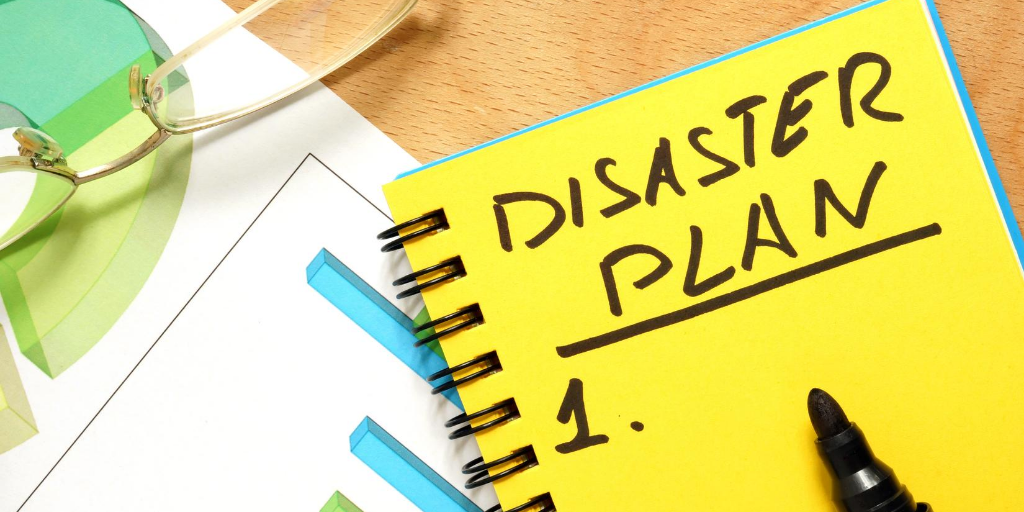

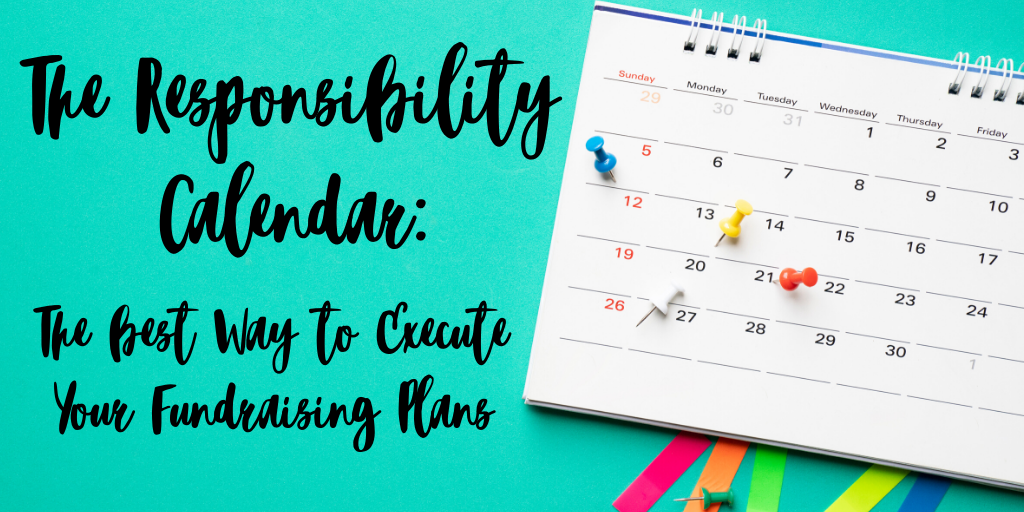
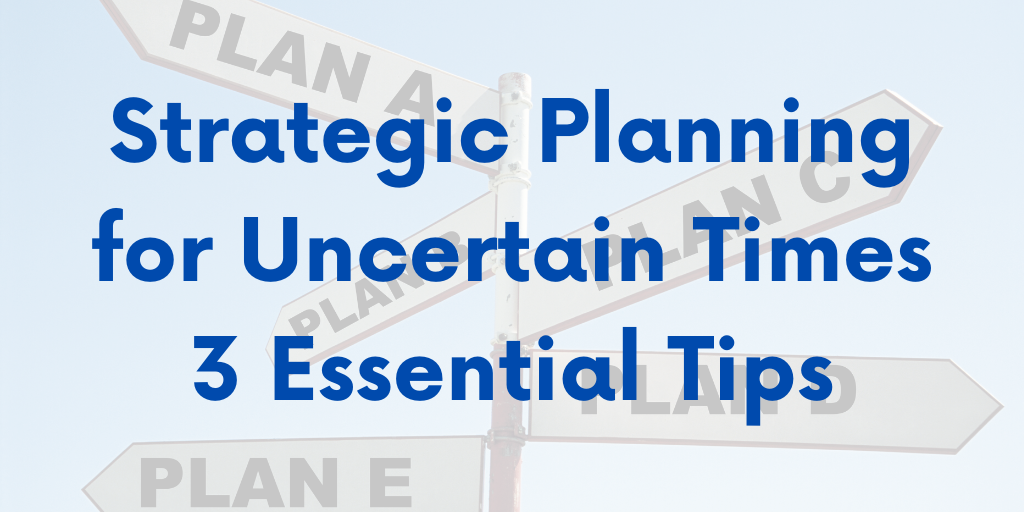
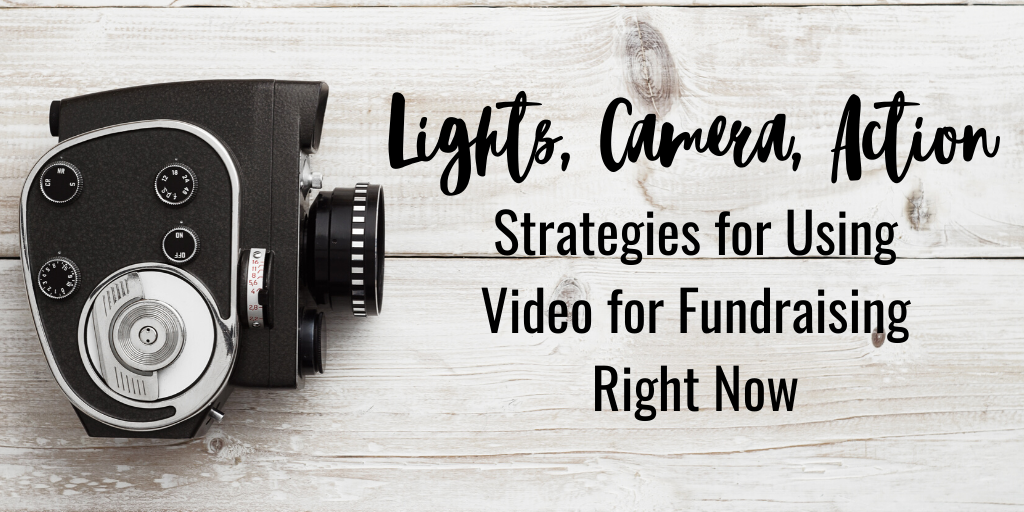
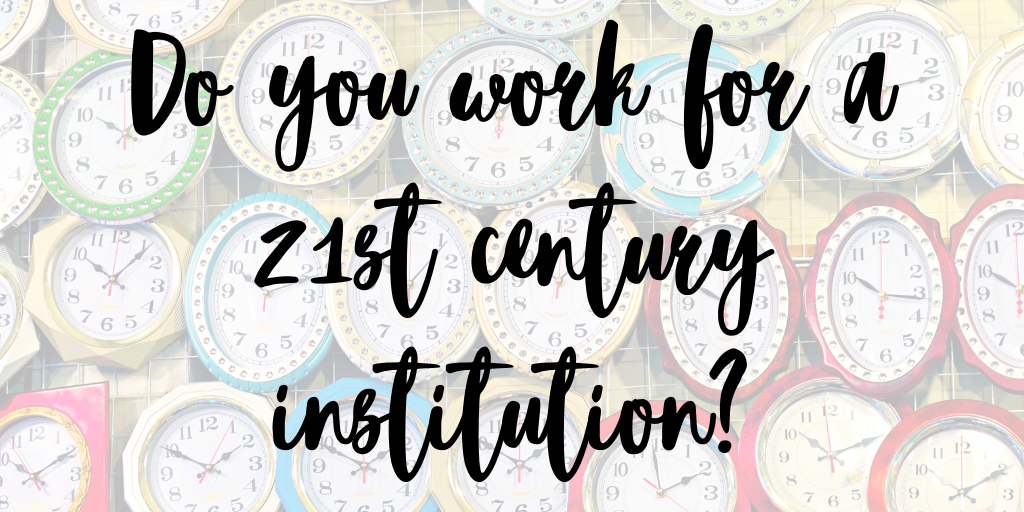
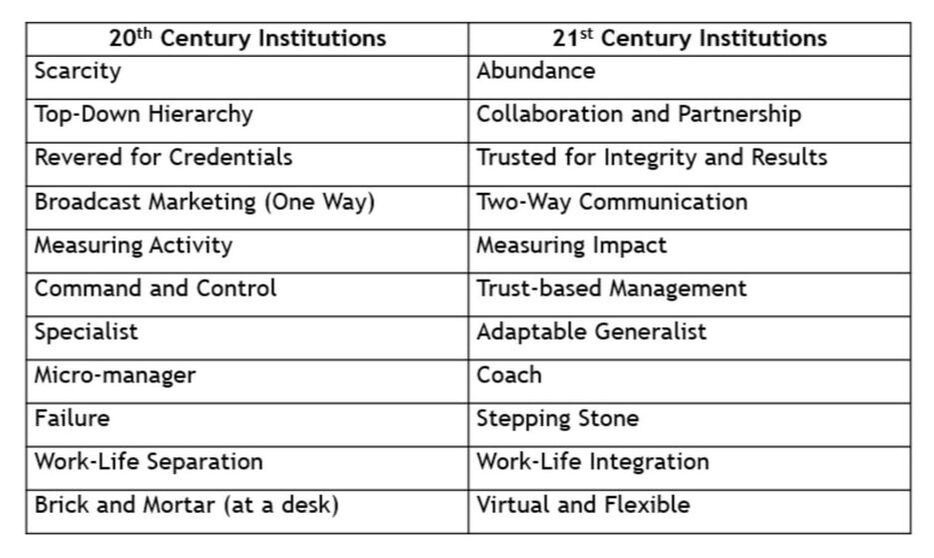
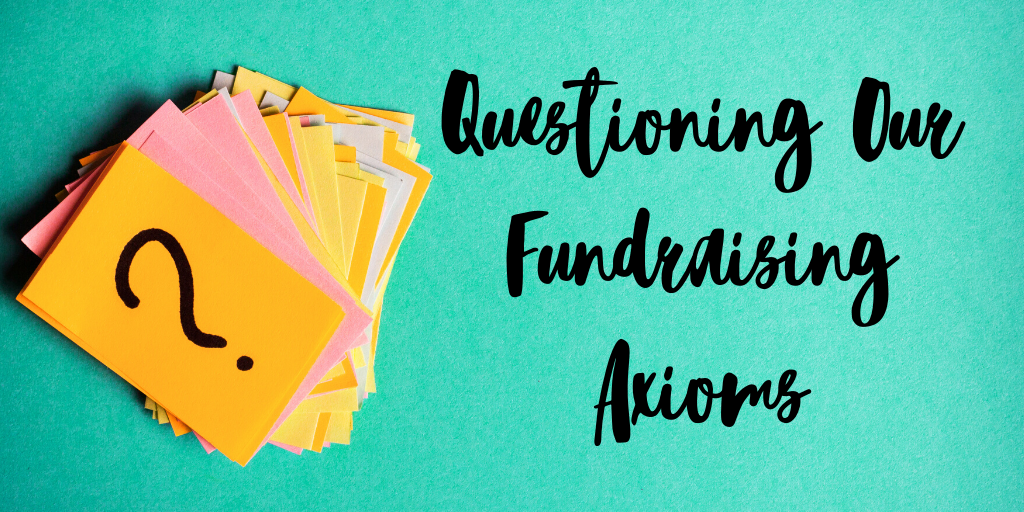
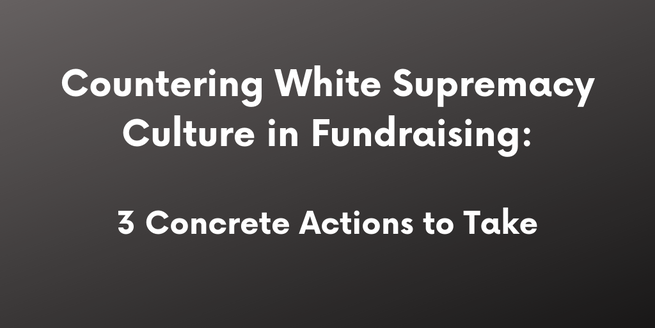
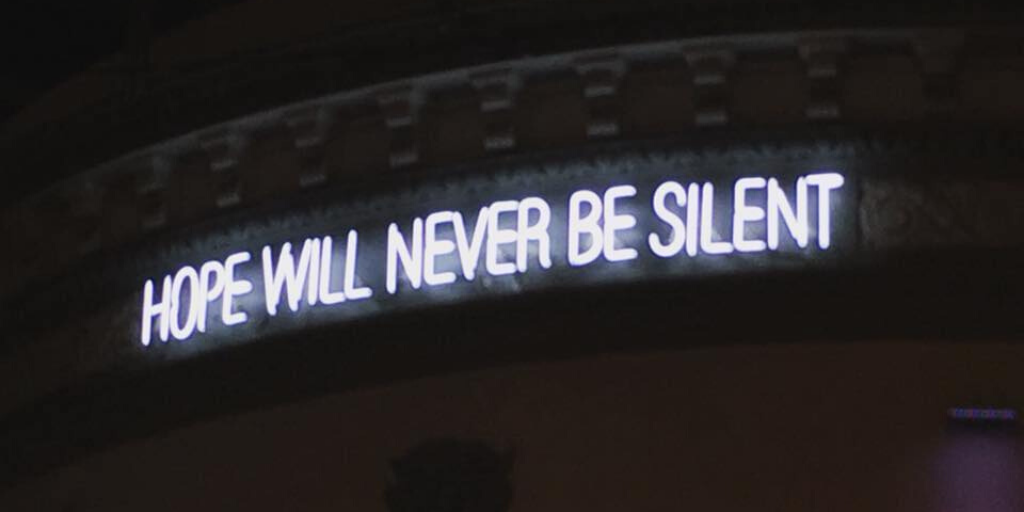

 RSS Feed
RSS Feed
